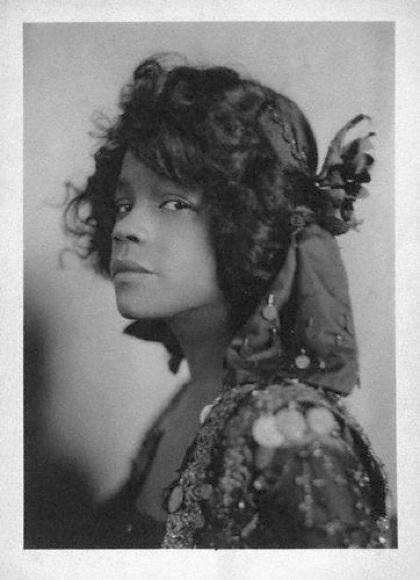From The Tattler newspaper, July 1, 1903.

It is difficult… to call the steps of the cake-walk by name. In the walk you follow the music, and as you keep time with it in what is best defined as a march you improvise. Gestures, evolutions, poses, will come to you as you go through the dance. The partners may develop steps which they think will impress the judges. Every muscle must be in perfect control.
The step of the cake-walk is light and elastic; after it has been learned fancy steps may be practiced. Some are very intricate; but the success of cakewalking depends largely on temperament, and as far as the actual steps are concerned the pupils may pass their instructors in time. The faces must be interested and joyous, and as the cake-walk is characteristic of a cheerful race, to be properly appreciated it must be danced in the proper spirit- it is a gala dance.
In dancing, all the muscles of the body are brought into play, any effort or fatigue is concealed, the shoulders thrown welll back, the back curved, and the knees bent with suppleness. The swing, all jauntiness and graceful poise, must come from the shoulders, and the toes must turn well out. The tempo is between the two-step and the march six-eight time. The Negro melodies which may be played for the dancers are without number. In the quicker numbers the women should be careful to manage their long skirts gracefully, an art which requires a good deal of practice, and beginners do well to wear the shorter skirts.

The cake-walk may be danced by any number of couples. A tall couple leads off, holding up the hands as in a barn dance. A cake is placed in the center of the room on a pedestal, the opening bars of the music are played, and the dancers march around.
The walk over, with its various features, its impromptu steps, and gaiety coming to an end, the question arises, “Who takes the cake?” The couples now march round in all solemnity and bow to the cake en passant. A halt at command when every couple has passed by. Then the master of ceremonies names the winners. The cake is carried before them by the master or one of the guests, two lines are formed of the dancers, and the happy couple dance between the lines to general handclapping. So ends the cake-dance.
About Aida:
Aida Overton Walker was born on Valentine’s Day, 1880. She was one of the major female vaudeville stars of her day and became known as “The Queen of the Cakewalk”.
In her early years she was part of Black Patti’s Troubadours, and was the first black women, in 1892, to sing at what would become Carnegie Hall. She was the wife of George Walker, who with his partner Bert Williams was part of the most important team of African American composer/performers in Vaudeville. From roughly 1900 to 1910 she helped them to produce a variety of hit productions expanding the roles available to African Americans.
Aida Overton Walker was also a choreographer for famous shows of the time produced by Bob Cole, J. Rosamond Johnson, and others. In 1912 she was a hit as “Salome” and performed for the Royal Family in Britain. She played male characters in drag after her husbands death. She died suddenly of kidney failure in 1914, she was only 34.




















